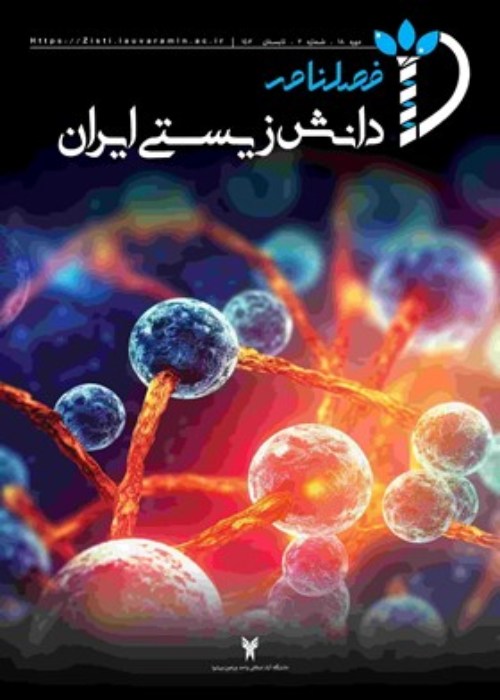Investigating relative water content, electrolyte leakage, phenolic compounds and activity of phenylalanine ammonia-lyase and tyrosine ammonia-lyase enzymes in triticale leaves treated with sodium chloride and calcium chloride
Considering the increasing number of saline lands due to water scarcity, it seems necessary to investigate ways to increase tolerance to salinity stress. Also, in order to overcome the negative effect of salinity stress, the use of calcium ion supplement in the growth environment is very useful and practical to improve the stress factor.
The purpose of this research was to investigate relative water content, electrolyte leakage, amount of mineral elements, antioxidant capacity, phenolic compounds and activity of phenylalanine ammonia-lyase and tyrosine ammonia-lyase enzymes in leaves of triticale (x Triticosecale Wittmack) treated with sodium chloride and calcium chloride.
This experiment was conducted as a completely randomized design with 3 replications in controlled greenhouse conditions. One-week-old seedlings were exposed with sodium chloride doses (0, 50, 100 and 150 mmol L-1) and calcium chloride doses (0, 6 and 10 mmol L-1) for 5 weeks and then some physio-morphological and biochemical characteristics including leaf number and surface, relative water content, ion leakage, contents of phenolic compounds (anthocyanin, total phenol, total flavonoid, total flavonol), enzymes activity (phenylalanine ammonia-lyase, tyrosine ammonia-lyase, glutathione reductase, glutathione S-transferase), antioxidant capacity and amount of mineral elements (sodium, potassium, calcium) were measured in leaves.
The results showed that salt stress significantly decreased the number and surface of leaves, relative water content, activity of glutathione reductase enzyme, the amount of potassium and calcium in leaves, but increased ion leakage, the contents of phenolic compounds, activity of phenylalanine ammonia-lyase, tyrosine ammonia-lyase and glutathione S-transferase enzymes, antioxidant capacity and sodium content in leaves. While the addition of calcium to saline environment increased the number and surface area of leaves, relative water content, activity of glutathione reductase enzyme, the amount of potassium and calcium in leaves, but decreased ion leakage, the contents of phenolic compounds, activity of phenylalanine ammonia-lyase, tyrosine ammonia-lyase and glutathione S-transferase enzymes, antioxidant capacity and sodium content in leaves.
Calcium reduced the harmful effects of salinity stress in leaves of triticale plant, so adding calcium to salty soils can be a simple, practical and economic solution to deal with salinity stress and increase soil productivity and a step towards to provide sustainable agriculture.
- حق عضویت دریافتی صرف حمایت از نشریات عضو و نگهداری، تکمیل و توسعه مگیران میشود.
- پرداخت حق اشتراک و دانلود مقالات اجازه بازنشر آن در سایر رسانههای چاپی و دیجیتال را به کاربر نمیدهد.




